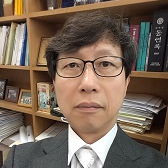Various Methods for Pharmaceutical Analysis Processes
A special issue of Molecules (ISSN 1420-3049). This special issue belongs to the section "Analytical Chemistry".
Deadline for manuscript submissions: 30 June 2024 | Viewed by 4703
Special Issue Editors
Interests: GC/MS; LC/MS; sample preparation; SPE; chemical sensors; spectroscopies analytical chemistry
Special Issues, Collections and Topics in MDPI journals
Special Issue Information
Dear Colleagues,
We cordially invite manuscript submissions on the topic of "Various Methods for Pharmaceutical Analysis Processes". This Special Issue aims to bring together innovative research works that showcase novel techniques and approaches in pharmaceutical analysis.
Pharmaceutical analysis is a critical component of the drug development process, as it ensures the quality, safety, and efficacy of pharmaceutical products. In recent years, various analytical methods have been developed to address the increasing complexity of drug formulations and the need for more accurate and sensitive analysis.
We welcome original research articles, reviews, and short communications that cover different aspects of pharmaceutical analysis, including, but not limited to:
- Chromatographic and spectroscopic methods;
- Electrochemical and immunochemical methods;
- Sample preparation and separation techniques;
- Quality control and validation methods;
- Pharmacokinetic and pharmacodynamic studies;
- Drug impurity profiling and stability testing.
All manuscripts will be subject to rigorous peer review to ensure high-quality publications. Accepted articles will be published in a Special Issue in our journal, which will be widely disseminated to the scientific community.
We look forward to your contributions and thank you for considering our invitation.
Prof. Dr. Ki-Jung Paeng
Prof. Dr. Jongki Hong
Guest Editors
Manuscript Submission Information
Manuscripts should be submitted online at www.mdpi.com by registering and logging in to this website. Once you are registered, click here to go to the submission form. Manuscripts can be submitted until the deadline. All submissions that pass pre-check are peer-reviewed. Accepted papers will be published continuously in the journal (as soon as accepted) and will be listed together on the special issue website. Research articles, review articles as well as short communications are invited. For planned papers, a title and short abstract (about 100 words) can be sent to the Editorial Office for announcement on this website.
Submitted manuscripts should not have been published previously, nor be under consideration for publication elsewhere (except conference proceedings papers). All manuscripts are thoroughly refereed through a single-blind peer-review process. A guide for authors and other relevant information for submission of manuscripts is available on the Instructions for Authors page. Molecules is an international peer-reviewed open access semimonthly journal published by MDPI.
Please visit the Instructions for Authors page before submitting a manuscript. The Article Processing Charge (APC) for publication in this open access journal is 2700 CHF (Swiss Francs). Submitted papers should be well formatted and use good English. Authors may use MDPI's English editing service prior to publication or during author revisions.
Keywords
- analytical method
- pharmaceutical analysis
- drug impurity profiling
- stability testing







